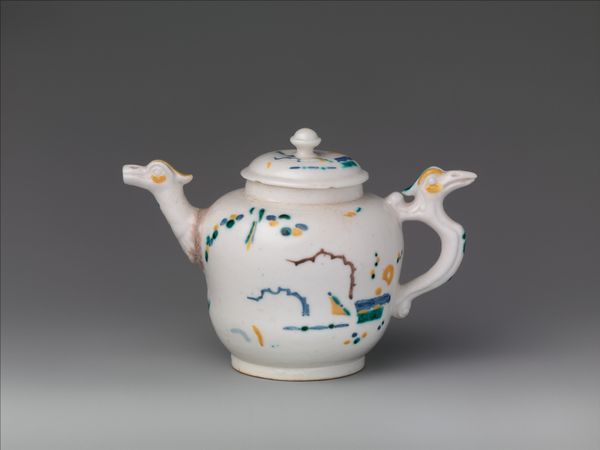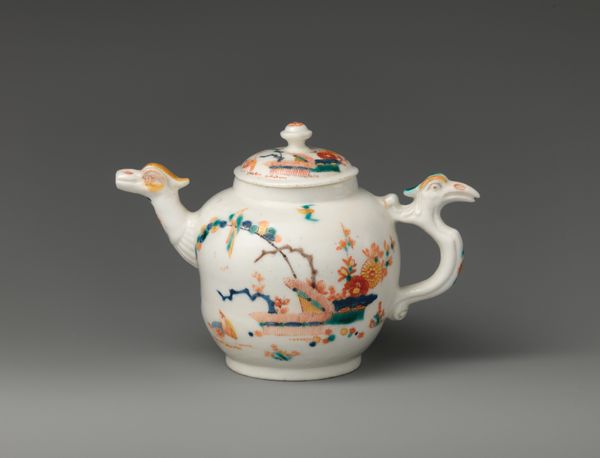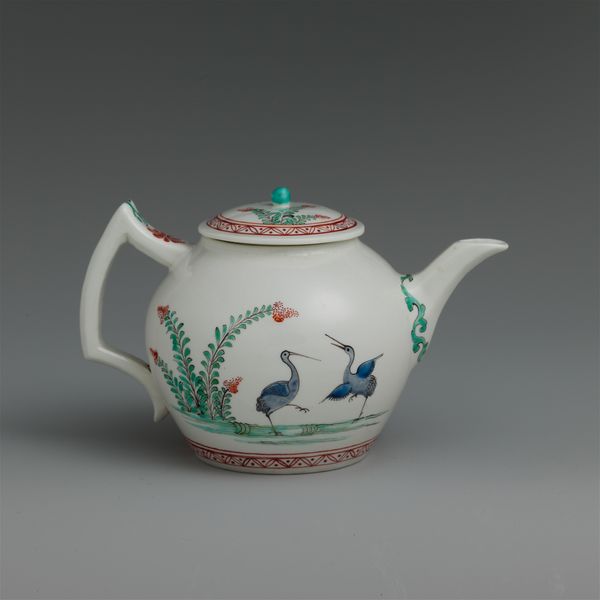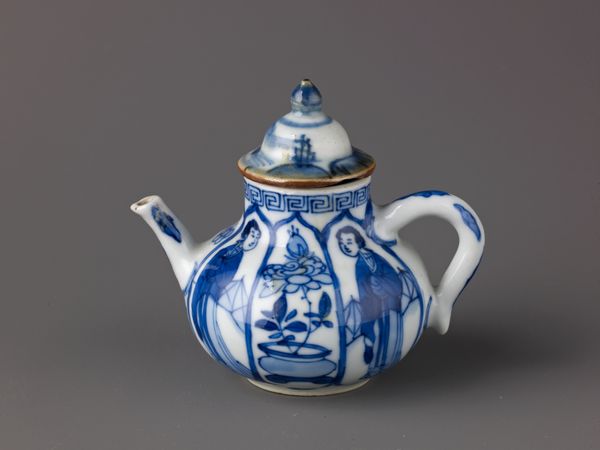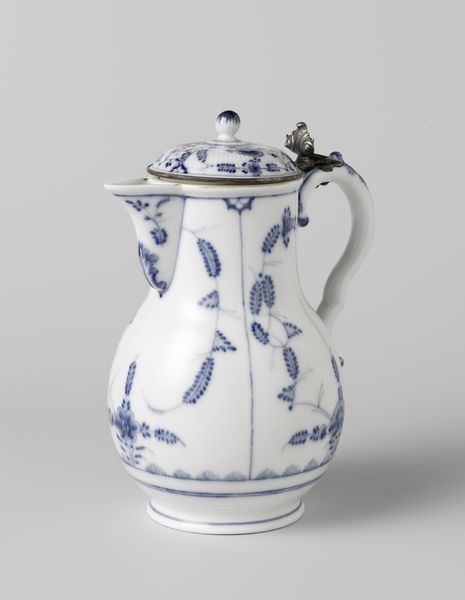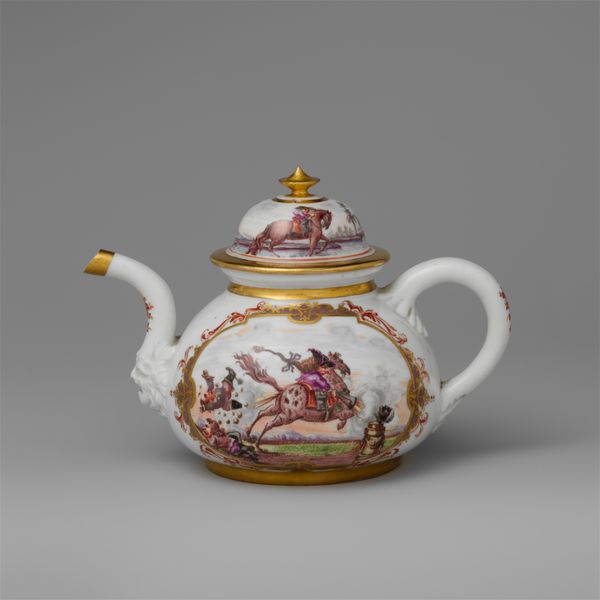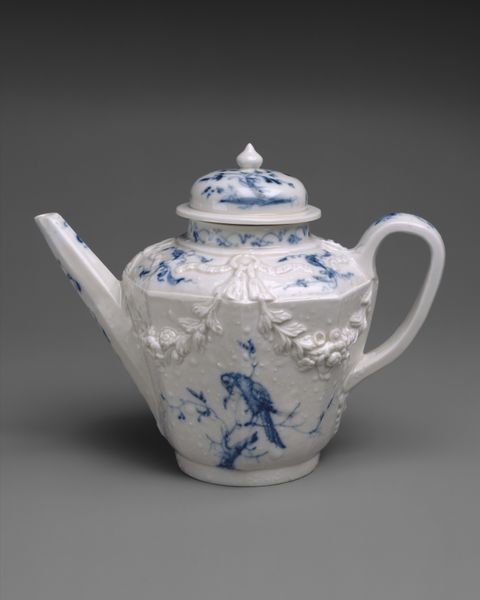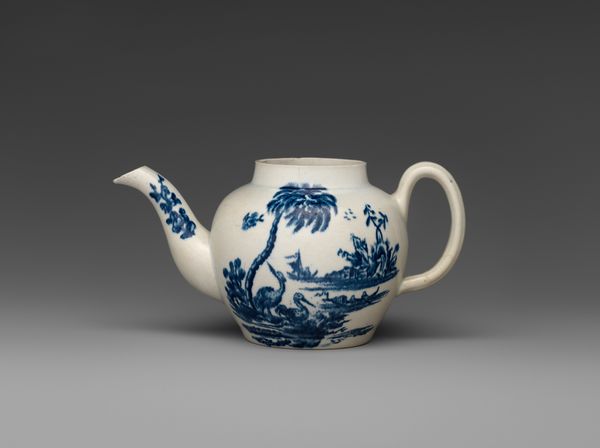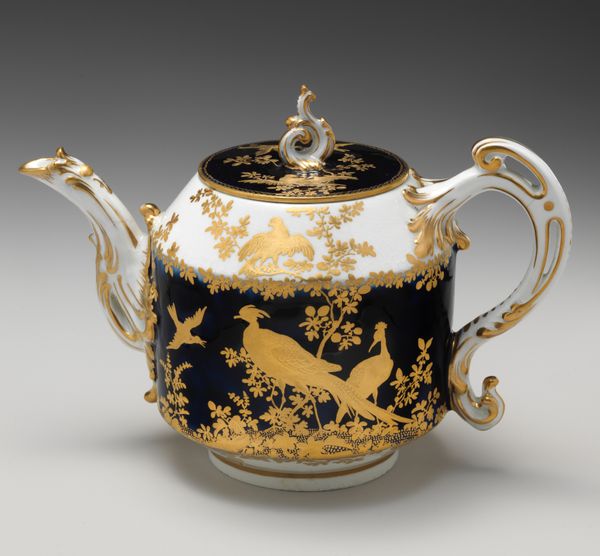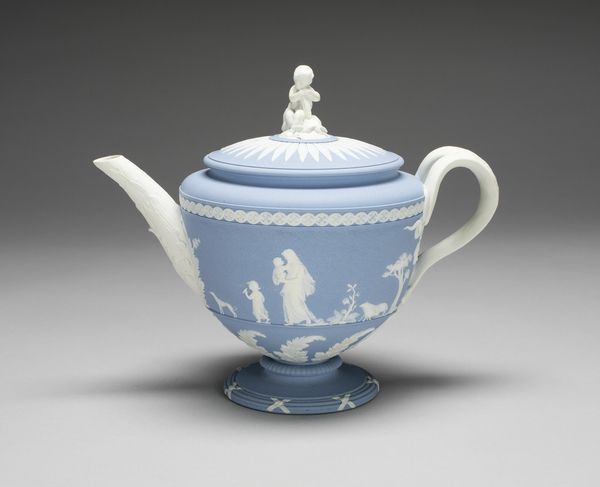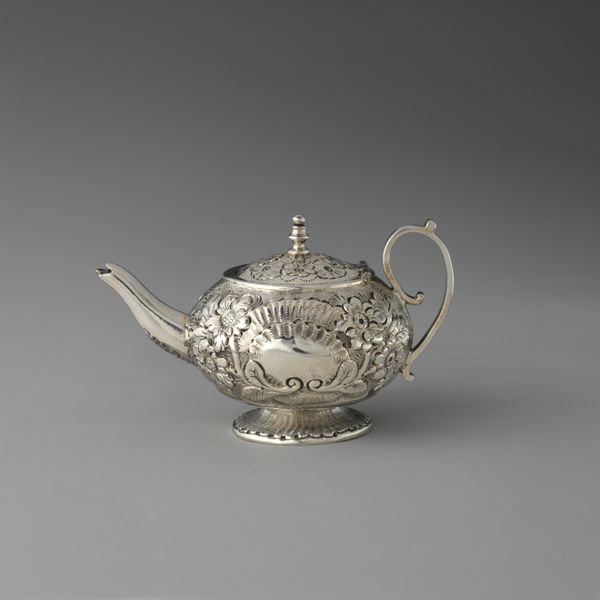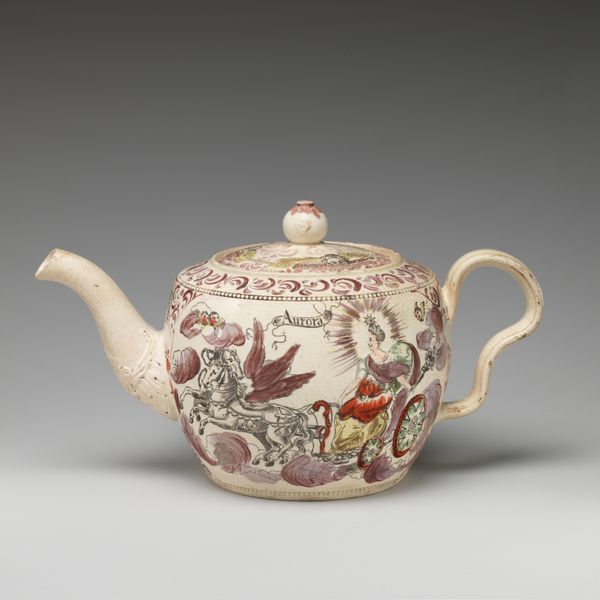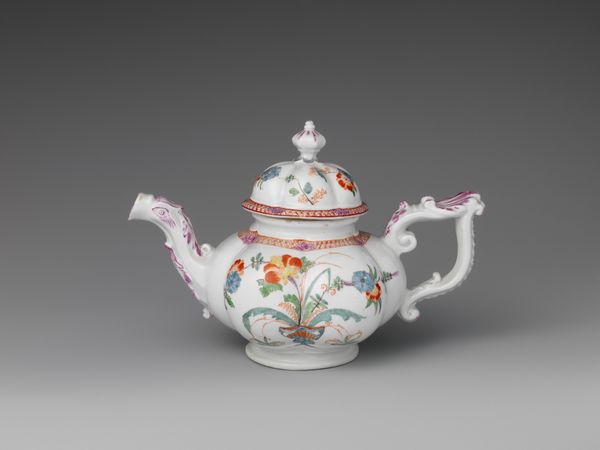
ceramic, earthenware
#
asian-art
#
ceramic
#
figuration
#
earthenware
#
orientalism
#
24_meiji-period-1868-1912
#
decorative-art
Dimensions: H. 9 1/4 in. (23.5 cm)
Copyright: Public Domain
This ewer was made by Makuzu Kōzan I, sometime between the late 19th and early 20th centuries. It is made out of porcelain, a fine, white clay body that becomes translucent when fired at high temperatures. Porcelain's inherent qualities—its smoothness, its capacity to take finely painted decoration, and its association with elite taste—made it the perfect material for this object. You can see a dragon painted on the surface in gold and blue overglaze enamels. Think about the skill involved in making this piece. The body was probably cast in a mold, then carefully finished and fired before being decorated by a highly trained painter. Japan became a major exporter of ceramics during this period, keen to prove their industrial capabilities to the West. This ewer cleverly adapts the forms of traditional Chinese porcelain for an international audience. The amount of work involved in its production speaks to the context of labor and politics in Japan during this time. Looking at this ewer, we can begin to challenge the traditional distinctions between fine art and craft. The care and skill put into making it suggest it deserves to be recognized alongside other artworks.
Comments
No comments
Be the first to comment and join the conversation on the ultimate creative platform.
